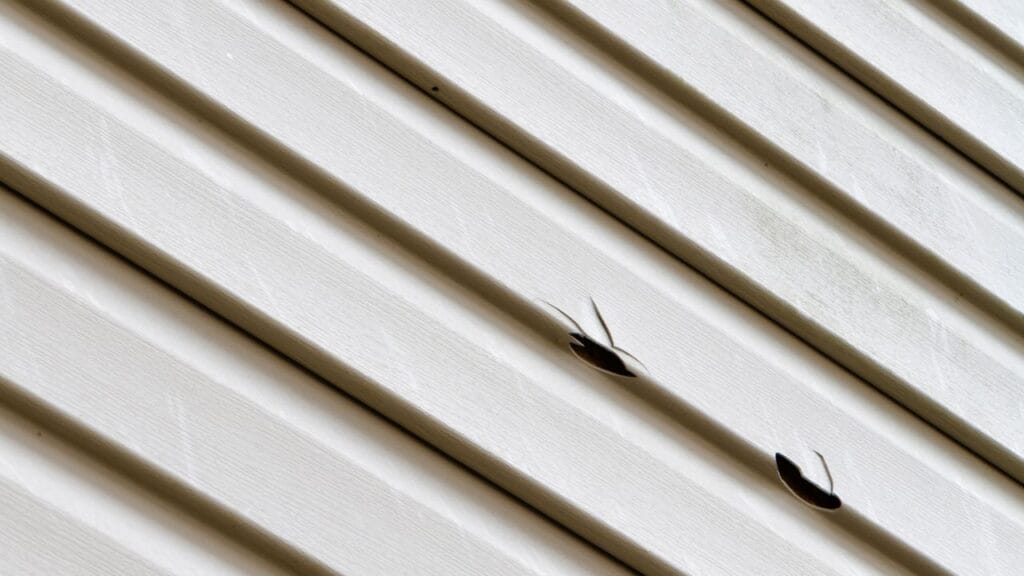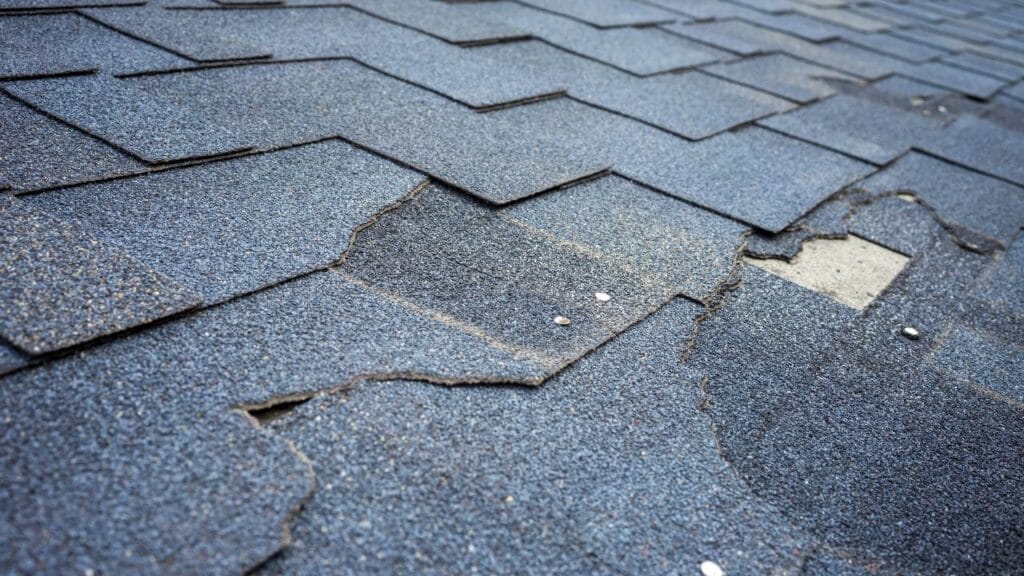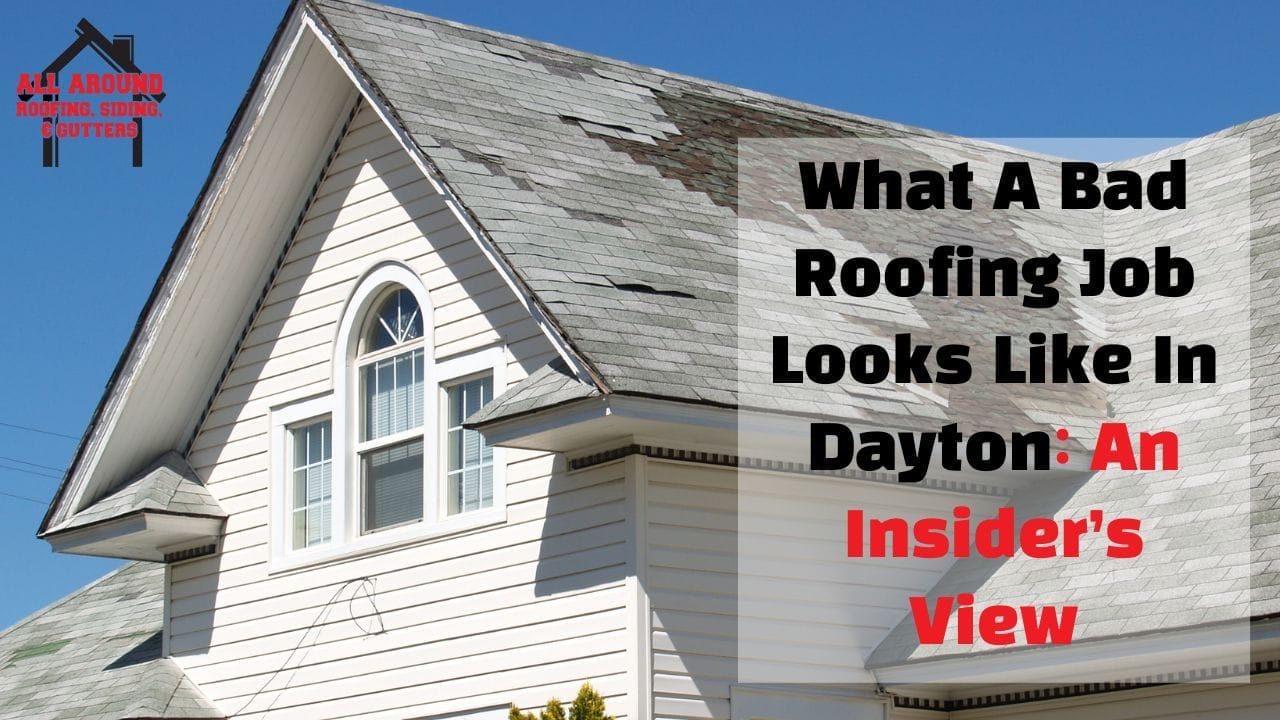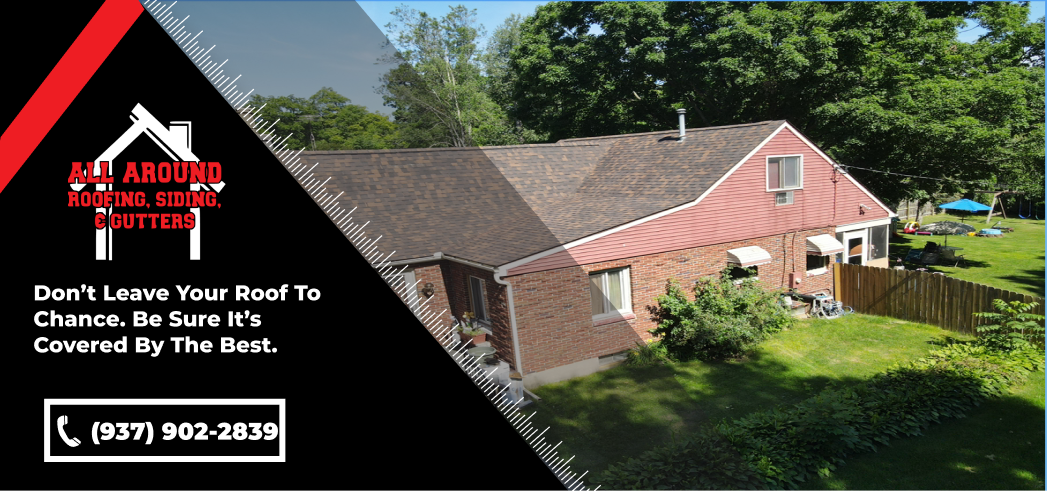A well installed roof will protect your home for years to come and increase its curb appeal. But it’s not just about looks. In Dayton, a bad roofing job can not only affect the appearance of your home, it can also affect its structural integrity and safety.
Being the most important part of a home, this blog post aims to help people in Dayton understand the signs of a bad roofing job. Knowing these signs is important to avoid problems caused by poor workmanship.
Signs of a Bad Roofing Job
A poorly done roofing job can lead to significant issues, both short term and long term. To avoid the troubles that come with subpar work, it’s crucial to recognize the signs of a bad roofing job. Here are some key indicators:
1. Sagging Rooflines
Drooping or sagging roof areas are strong indicators of a bad roofing job. A well installed roof should be even, straight, and uniform. Sagging rooflines may signal the use of inferior materials or poor workmanship, possibly leading to dangerous structural damage, which can be expensive to fix.
2. Messy and Unprofessional Work
There are a number of obvious indicators of an untidy and amateur roofing job, which include:
> Unevenly Distributed Tar or Concrete:
Materials that have been applied correctly should be dispersed in line with the manufacturer’s instructions. Inconsistent application might result in water leakage.
> Exposed Nails:
Nails that are left exposed can harm shingles and result in leaks. Properly installed shingles should have their nails hidden.
> Broken or Damaged Siding:

This can occur from using the wrong materials or inappropriate roofing methods, which can cause structural damage and water infiltration.
> Inadequately Cut or Placed Flashing:
Defective flashing installation can let water seep into the home, which can result in mold growth and other structural problems.
> Lack of Uniformity:
Different shingles in terms of color, size, or material might be a sign of poor roofing work because they are likely not compatible, leading to premature deterioration.
> Wrong Nailing Technique:
Inadequate nailing techniques might cause problems like leaks and water damage.
3. Misaligned Shingles
Shingles that are out of alignment are a glaring sign of a badly done roof. Poor workmanship or the use of subpar materials are the two most typical causes of this problem. Misaligned shingles can cause a number of concerns, the most serious of which being the possibility of water seeping into the interior of the home. Inadequate installation practices by the roofer, disregarding the manufacturer’s instructions regarding shingle placement, or failing to utilize chalk lines as interim aids for straight shingle placement can all lead to misaligned shingles. To fix misaligned shingles, it might be necessary to replace them.
4. Inferior Workmanship
Quality workmanship is crucial in roofing. Careless work can lead to various problems, compromising the roof’s integrity and potentially damaging the protected structure. Indicators include improper nailing, misaligned shingle placement, and unsecured flashing.
Being aware of signs of a bad roofing job and knowing how to address the situation helps protect your investment and ensure the safety of your home or building. Promptly address concerns and seek assistance to rectify any issues.
How to Handle a Bad Roofing Job
1. Contact the Roofer
Reach out to the roofer, explaining the issues observed. A reputable company should swiftly address the problem, honoring contract terms and any warranties. If contact is unsuccessful or they refuse to help, proceed to the next steps.
2. File a Complaint with the Better Business Bureau
If the roofer doesn’t cooperate, contact the Better Business Bureau. Detailing the problem can help resolve disputes. The bureau aids in settling issues related to contracts, customer service, warranties, and more. Even if the roofer isn’t registered, you can still file a complaint.
3. Consult a Lawyer or File a Lawsuit
If the roofer denies responsibility, consult a lawyer or consider filing a lawsuit in small claims court. Legal advice can guide you on pursuing damages either through an attorney or in small claims court.
Make sure to document specific issues and involve a third party inspector if needed. Their impartial report can aid negotiations or legal proceedings.
Knowing the steps to take when faced with a bad roofing job safeguards your investment and ensures your home’s safety. Promptly addressing issues is crucial to prevent further damage and expenses.
Does Homeowners Insurance Cover a Bad Roofing Job?
If your roof is damaged because of a bad roofing job, your homeowner’s insurance might help, but it depends on certain factors. Here’s what to think about:
Roof Damage Coverage:

Homeowners insurance usually pays for roof damage caused by things like wind, hail, or fire. But it often won’t cover damage from regular wear, lack of maintenance, or poor work.
Roof Age:
Some insurance might say no if your roof is old, like asphalt shingles that are 20 years or older. In that case, it’s usually better to have your roof replaced rather than repaired.
Workmanship Warranty:
A workmanship warranty is there to cover any problems caused by the contractor. The roofer should fix issues or leaks from a bad installation without charging you extra.
Filing a Claim:
If you think your insurance covers the roof damage, you can ask for help. But be careful– asking might make your insurance cost more.
Get a Third Opinion:
If the roofer won’t fix the issue or says it’s not their fault, you can hire someone else to check and give you a fair report. If they agree with you, you can use the report to talk to the roofer or maybe even in court.
In the end, homeowners insurance might pay for roof damage from a bad job, but it depends on your policy and situation. Understand your insurance policy, and think about other choices like warranties and third party inspections if your roofing job was done poorly.
The Cost of a Bad Roofing Job
A bad roofing job can be expensive to remedy because of problems both immediate and in the future. Here’s why:
Short Term Problems
> Water Leaks:
Water can leak into your home through an improperly built roof, damaging the interiors and possibly causing harm to your belongings. Water leaks can also increase the possibility of mold growth and raise insurance premiums.
> Mold:
Mold can grow easily in your home if your roof is badly built. In addition to posing health hazards, mold can cause structural damage to your entire home. The process to remove mold can be both expensive and time consuming.
> Higher Bills:
Inadequate insulation resulting from improper roof installation might make your home excessively hot or cold. Your heating and cooling systems may have to work harder to maintain a comfortable temperature, which could lead to increased energy bills.
> Legal Costs:
In serious cases, a poor roofing job could result in legal action, which could lead to further expenses. This may mean costs for legal counsel and covering the cost of a new roof installation in the event that the initial installation is determined to be defective.
A poorly done roof can lead to some major long term problems. Costly repairs or even a full roof replacement may be necessary, causing a substantial financial burden. The value of your home may also decrease if the roof is not in good condition. Moreover, a bad roofing job can break your trust in the roofing industry, making it challenging to rely on other roofers in the future.
In the end, fixing a bad roofing job quickly and correctly can help you save money and keep your home safe. Knowing the signs of a bad roof job and what to do can protect your home and belongings from further damage.
Conclusion
In summary, a bad roofing job can cause major problems, both in the short and long term. To avoid these issues, it’s important to hire experienced, trusted roofers. If you come across a bad roofing job, it’s crucial to fix the problem and make sure you’re happy with the end result.
By knowing the signs of a bad roofing job and what to do about it, you can keep your investment safe and your home or building in good shape. If you worry about the quality of recent roofing work, make sure to act fast and get help to fix the issue.
Say Goodbye to Poor Roofing Work! Contact Us for Expert Repairs
Don’t know what to do if a roofer does a bad job? You can rely on All Around Roofing, Siding & Gutters! We are competent experts with 10 years of local experience. We can handle any type of residential roofing, siding, gutter, or commercial roofing project.
Our first goal is customer satisfaction, and we make sure there is a complete cleanup after the task is done. For additional information or to make an appointment in the Greater Dayton Area, call us at (937) 902-2839.


